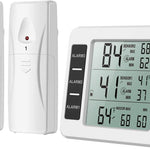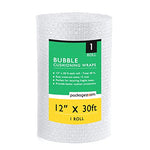You have no items in your shopping cart.
Managing and maintaining facilities is essential for organizations of all sizes and industries. Whether it's a commercial building, a manufacturing plant, or a healthcare facility, proper facilities maintenance plays a crucial role in ensuring smooth operations and optimal functionality. This article dives into the world of facilities maintenance, exploring its importance, key considerations, and best practices.
1. What is Facilities Maintenance?
Facilities maintenance refers to the ongoing activities and processes involved in the upkeep, repair, and management of physical assets within a facility. It encompasses a wide range of tasks, including regular inspections, preventive maintenance, repairs, upgrades, and emergency response.
2. The Importance of Facilities Maintenance
Maintaining facilities is vital for several reasons. It helps organizations:
- Ensure Safety: Regular maintenance helps identify and address potential safety hazards, reducing the risk of accidents and injuries.
- Preserve Asset Value: Proper upkeep and preventive measures extend the lifespan of facilities, protecting the organization's investment.
- Minimize Disruptions: Well-maintained facilities experience fewer breakdowns, minimizing operational disruptions and associated costs.
- Comply with Regulations: Adhering to building codes, health and safety regulations, and industry standards is crucial for legal compliance and risk mitigation.
- Enhance Efficiency: Efficiently running systems and equipment improve energy efficiency, reducing operational costs and environmental impact.
3. Key Components of Facilities Maintenance
Effective facilities maintenance encompasses various components that work together to ensure seamless operations:
3.1 Preventive Maintenance
Preventive maintenance involves regular inspections, cleaning, and servicing of equipment and systems to identify and address potential issues before they escalate. This proactive approach helps avoid unexpected breakdowns and costly repairs.
3.2 Corrective Maintenance
Corrective maintenance focuses on fixing issues and malfunctions that occur unexpectedly. It involves timely repairs and troubleshooting to restore normal operations and prevent further damage.
3.3 Predictive Maintenance
Predictive maintenance utilizes advanced technologies and data analysis to predict equipment failures. By monitoring performance indicators and utilizing predictive analytics, maintenance can be scheduled at optimal times, minimizing downtime and maximizing efficiency.
3.4 Facility Upgrades and Renovations
Facilities require periodic upgrades and renovations to meet evolving needs, comply with regulations, and incorporate technological advancements. These projects can range from equipment replacements to infrastructure improvements and space optimization.
4. Best Practices in Facilities Maintenance
Implementing best practices in facilities maintenance can help organizations streamline operations, reduce costs, and enhance overall facility management. Here are some key considerations:
4.1 Develop a Comprehensive Maintenance Plan
Creating a well-defined maintenance plan is essential to ensure that all aspects of facilities maintenance are covered. This plan should include schedules, responsibilities, and procedures for preventive, corrective, and predictive maintenance tasks.
4.2 Regular Inspections and Audits
Routine inspections and audits help identify maintenance needs, detect potential issues, and assess the overall condition of facilities. This information guides maintenance planning and ensures timely interventions.
4.3 Utilize Technology and Automation
Leveraging technology and automation tools can streamline maintenance processes, improve data management, and enhance communication. Computerized maintenance management systems (CMMS) and Internet of Things (IoT) devices enable real-time monitoring, predictive analytics, and automated work orders.
4.4 Implement a Comprehensive Asset Management System
Tracking and managing assets efficiently is crucial for effective facilities maintenance. Implementing an asset management system helps monitor equipment performance, schedule maintenance, track repairs, and optimize resource allocation.
4.5 Prioritize Training and Skill Development
Investing in training and skill development for maintenance staff ensures they possess the necessary expertise to handle equipment, utilize new technologies, and perform maintenance tasks effectively and safely.
4.6 Regular Evaluation and Improvement
Continuous evaluation of maintenance processes, performance metrics, and customer feedback allows organizations to identify areas for improvement and implement corrective actions. This iterative approach helps optimize maintenance operations over time.
5. Frequently Asked Questions (FAQs)
Let's address some common questions related to facilities maintenance:
Q1: How often should preventive maintenance be conducted? Preventive maintenance frequency varies depending on factors such as equipment type, manufacturer recommendations, and usage. It can range from monthly or quarterly inspections to annual servicing. Consulting equipment manuals and industry best practices can help determine appropriate intervals.
Q2: Can facilities maintenance help reduce energy consumption? Absolutely! Proper maintenance, such as cleaning and calibrating HVAC systems, optimizing lighting setups, and repairing leaks, can significantly reduce energy consumption, leading to cost savings and environmental benefits.
Q3: Is it better to outsource facilities maintenance or have an in-house team? The decision to outsource or have an in-house team depends on various factors, including budget, facility size, required expertise, and maintenance workload. Some organizations find outsourcing more cost-effective, while others prefer the control and convenience of an in-house team. Assessing your specific needs and evaluating available options can help determine the best approach.
Q4: What are some signs that indicate the need for facility upgrades? Signs that suggest the need for facility upgrades include outdated equipment, inefficient systems, recurring breakdowns, increasing maintenance costs, insufficient capacity, safety concerns, and compliance issues. Regular inspections and assessments can help identify areas requiring upgrades or renovations.
Q5: How can predictive maintenance benefit facilities management? Predictive maintenance enables organizations to shift from reactive to proactive maintenance practices. By leveraging data and analytics, it predicts equipment failures, identifies maintenance needs, and schedules interventions at optimal times. This approach minimizes downtime, reduces costs, and enhances operational efficiency.
Q6: How does facilities maintenance contribute to a positive work environment? Well-maintained facilities create a pleasant and safe work environment, boosting employee morale and productivity. Adequate lighting, comfortable temperatures, clean and organized spaces, and well-functioning equipment all contribute to a positive work atmosphere.
Conclusion
Facilities maintenance is an integral part of effective facility management. By implementing preventive, corrective, and predictive maintenance practices, organizations can ensure the smooth operation of their facilities, minimize disruptions, and optimize resource allocation. With proper planning, technology utilization, and continuous improvement, facilities maintenance plays a key role in creating a safe, efficient, and productive work environment.








